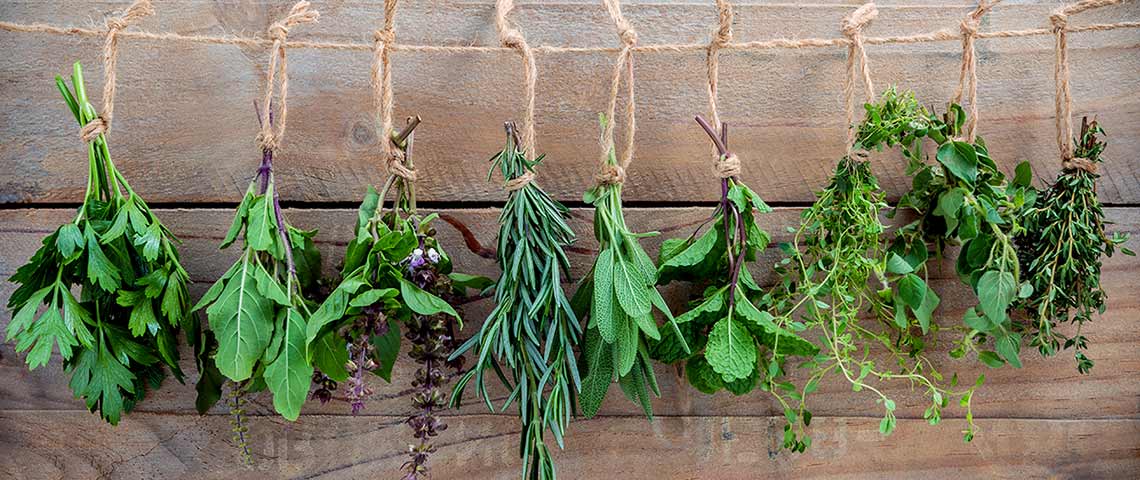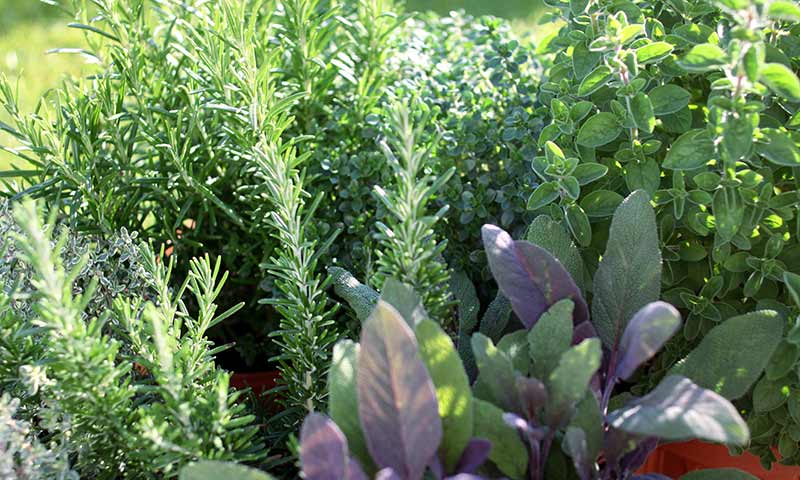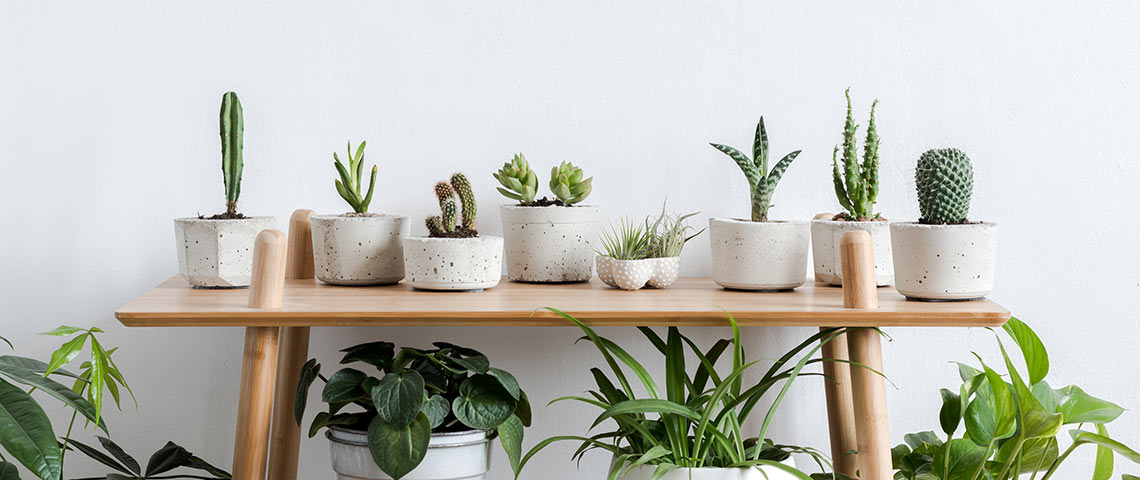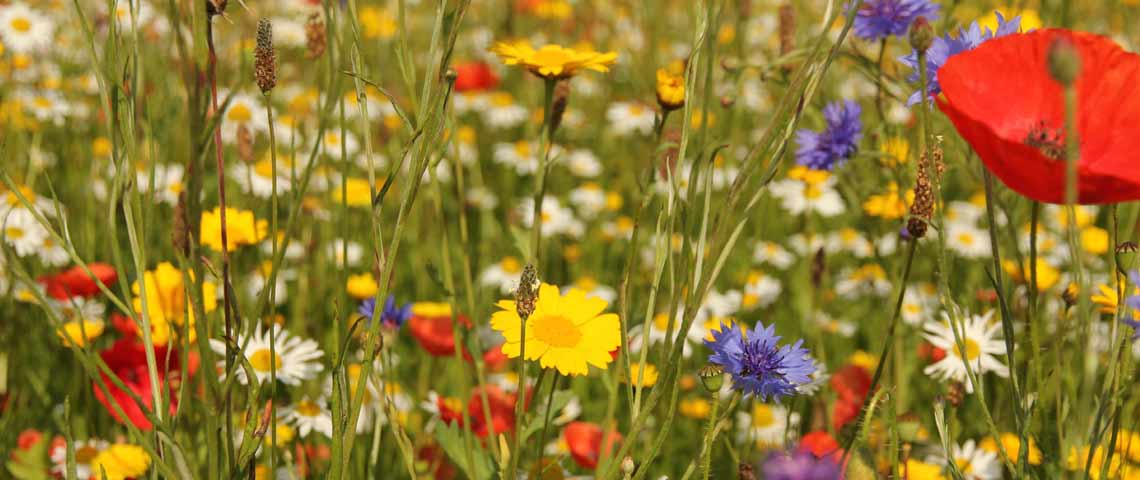How to Grow Herbs
If culinary adventures or herbal apothecary aesthetics are your cup of tea, you need year-round herbs. Yes, need. Planted in your yard, your indoor garden or both, herbs deliver big and ask little in return. Beautiful color, fragrance, texture and, of course, taste, come with the package when you meet basic herb needs.
Herb gardens have the same basic needs, indoors and out.
Herb-Growing Basics
Do a little research and you'll discover that many of your favorite herbs started life on Mediterranean shores. (Need a minute to Google "Mediterranean climate?" Go ahead. We'll wait.) Their native habitat says a lot about herbs' natural preferences, which don't really change whether they're grown outdoors or inside.
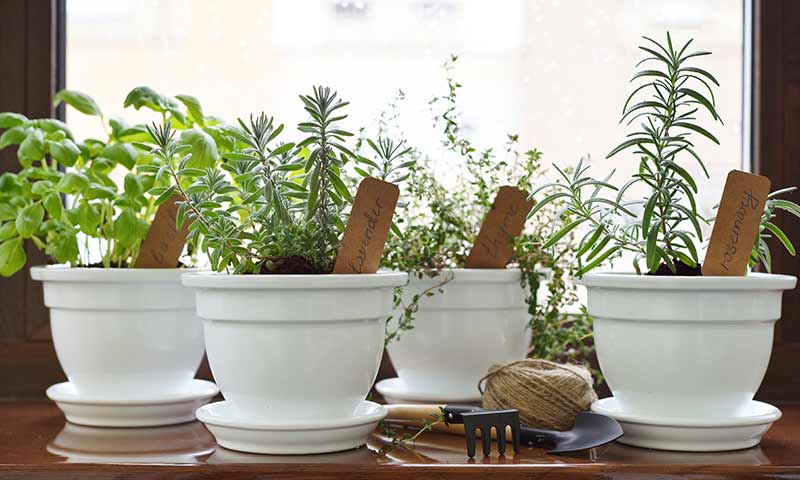
Sunny windowsills are herb gardens in the making.
Sunlight
In nature, most common herbs prefer full direct sun. In your outdoor garden — planted in the ground or in pots — most herbs need at least six to eight hours of full sun every day. The more, the better. Sunlight's crucial to vibrant foliage and the essential oils that give herbs their fabulous aromas and flavors. So don't skimp.
For indoor herb gardens, give your plants as much natural light as possible. Your brightest windows are your best bet. If your light still falls short, don't put up with spindly stems and lackluster leaves. Treat yourself to a countertop LED-lit growing station and give your herbs the light they need.
Soil and Drainage
Good soil and healthy herbs go hand in hand. Compacted soil and poor drainage are fast tracks to yellow leaves, brown leaf tips or root rot. That'll put a real crimp in your herb-infused cocktail and culinary plans.
For in-ground outdoor gardens, Pennington Rejuvenate Natural & Organic Garden Soil Mix helps revitalize your native soil with essential plant nutrients and soil-enhancing ingredients like earthworm castings that improve aeration and bio-stimulants that help herb roots draw nutrients in.
For potted herbs, grown outside or indoors, Pennington Rejuvenate Premium All Purpose Potting Soil Mix nurtures roots with the same earth-friendly ingredients, plus water-holding crystals and a wetting agent to help you conserve water and avoid extremes.
Water
All plants need water for survival, but many herbs have natural drought tolerance built in. In fact, essential oils and the tastes and fragrances that come with them tend to peak when herbs live on the dry side. That's one more reason herbs are great choices for drought-tolerant xeriscapes or low-maintenance, sustainable lawn alternatives.
In general, herbs with soft fleshy stems and leaves, like culinary basil or peppermint, prefer more moisture. Outdoors, water them like homegrown vegetables — at least 1 inch of water per week, from rainfall or you. Indoors, treat them like your tropical houseplants; give them a drink whenever the top 1 to 2 inches of soil dries out.
For herbs with harder, woodier stems — like lavenders, rosemary, thyme and sage — leave the outdoor watering to Mother Nature unless the season is extremely dry. Indoors, water when the soil dries out a finger's length deep. Even if your pots get dry, the wetting agent in Pennington Rejuvenate Potting Soil Mix Premium All Purpose helps water distribute evenly through the pot's soil.
Nutrients
Gravelly Mediterranean hillsides aren't known for nutrient-rich soil. Herbs adapted. Like water, most common herbs need less added nutrients from fertilizers than other garden plants. Too much fertilizer and your misdirected TLC translates to weak growth and less intense essential oils.
For outdoor herb gardens or potted herbs grown indoors, our Pennington Rejuvenate Plant Food All-Purpose 4-4-4 provides a balanced blend of organic and natural ingredients to improve the soil environment and feed your herbs without going overboard. Earthworm castings, beneficial microorganisms and humic acids gently nourish herbs from the inside out for up to four months.
Pest Control
This one's easy. In general, leaf-damaging pests shy away from plants with strong leaf aromas and essential oils, which gives your herb garden an advantage. Even hungry deer avoid common herbs like rosemary, thyme, lavender and sage unless they're the only food source left. When less fragrant, soft-stemmed herbs buddy up with more fragrant types, they get protection, too. And pollinators? They love the flowering herbs pests avoid.
Give your herb plants — indoors and out — good air circulation along with the good drainage we already talked about and you'll discourage common foliage and root diseases. When you water, avoid getting leaves wet. This helps prevent the spread of some foliar diseases.
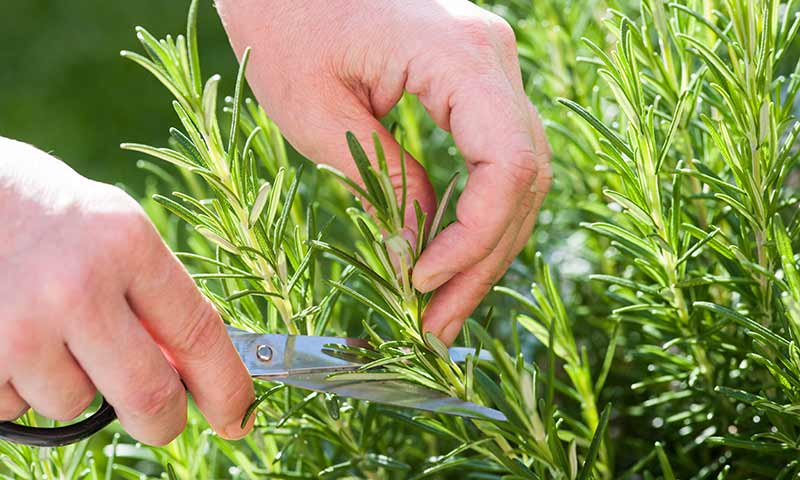
Regular herbal harvests encourage more growth — and tastier meals.
Easy-to-Grow Herbs
Choosing the herbs you want to grow depends a lot of what you love to see, feel and taste. Many herbs have silver or blue-green foliage that looks great playing off other plants. Some have soft, downy leaves, while others have needle-like evergreen leaves year-round. Grow your herbs from seed or go the live plant route.
Easy-to-grow herbs for year-round indoor growing include basil, mint, parsley, sage, rosemary, thyme and chives. These favorites all do well in windowsill gardens and larger containers, provided they get sufficient light. Flavor up rustic Tuscan dishes with sage, freshen drinks with mint, and shower roasted root veggies with rosemary — all without stepping outdoors.
For outdoor herb gardens, having your own slice of earth is pretty great. Anything you love goes. Annual herbs like cilantro, dill and basil only last a single season, so plan to replant them every year. Perennial herbs can live several years — and get large outdoors. Depending on your climate, they may die back to the ground in cold winters or tough it out. These include sage, lavender, rosemary, chives and mints. Mints can spread aggressively, so you may want to set some boundaries and plant them in pots instead.
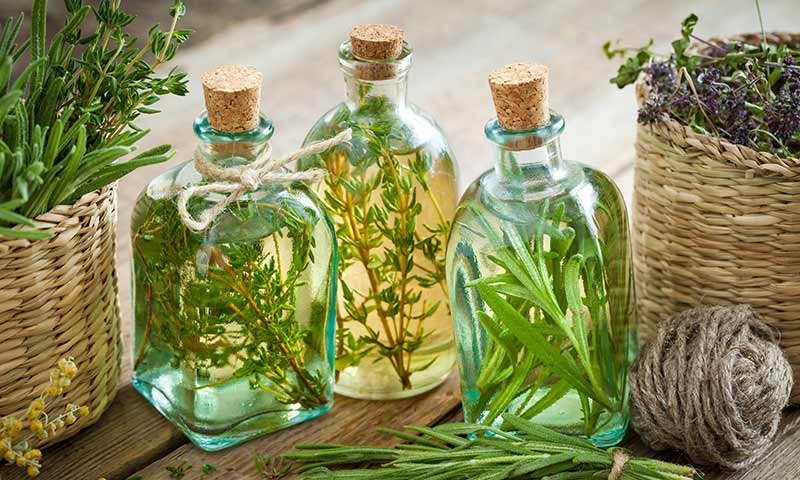
Use herbs fresh, dried or frozen. It's all up to you.
Harvesting Your Herbs
Whether your herbs grow indoors, outdoors or both, regular harvests help them keep producing and looking great. Wait until your plants get established and have a healthy amount of leaves, then feel free to dive in. If possible, plan to harvest herbs in the morning, when essential oils peak.
When you harvest herbs, think about what you take and what you leave behind. You can harvest individual stems throughout the plant or cut stems right above a set of leaves. This gives you the herbs you need, encourages more growth, and keeps your plants looking full and neat.
Use your fresh herbal harvests for cooking, teas, bouquets and infusions, or process them for future use. To dry stemmed herbs, tie them together and hang them upside down away from humidity and direct sun. (Dehydrators work, too.) Many herbs, including basil, chives and fernleaf dill, freeze extremely well. Pack them in freezer containers and pull out what you need, when you need it, for "fresh" herb flavor anytime.
We can already hear the accolades you'll get from family and friends once your herbal talents get around. Ready to make your herb garden dreams come true? We'd love to be there when you do. We're Pennington, and we're here for you.
Always read product labels thoroughly and follow instructions.

